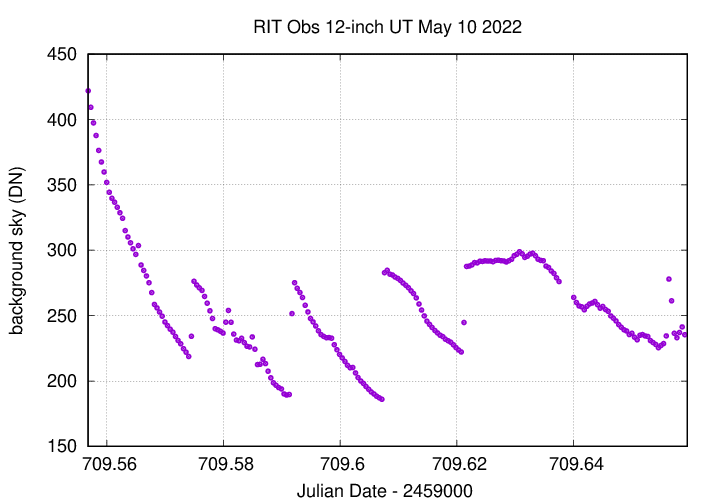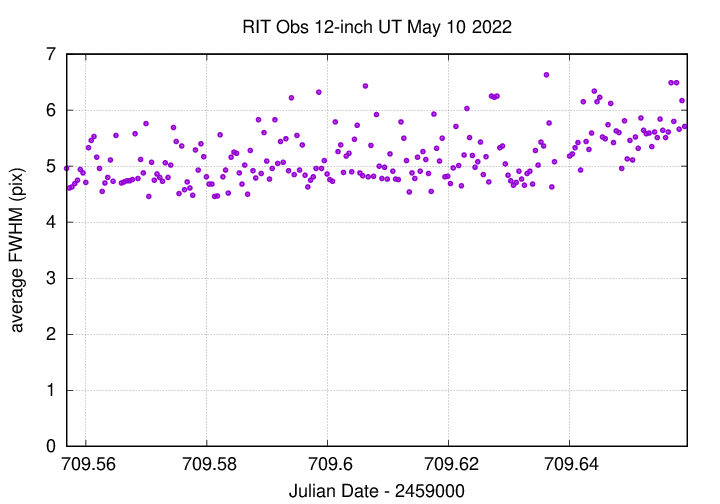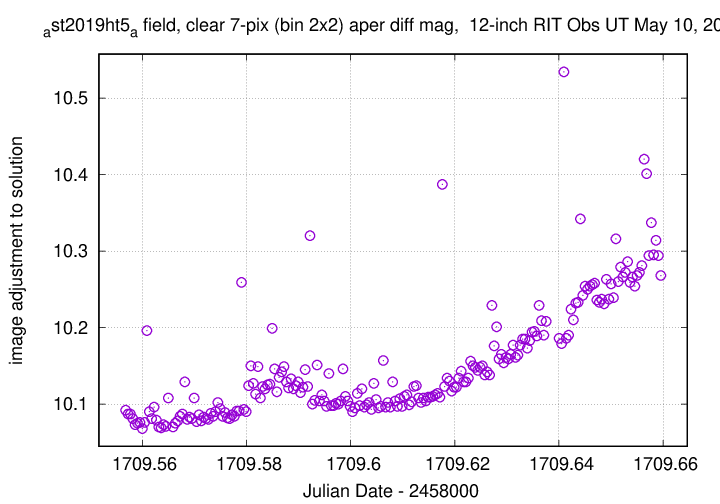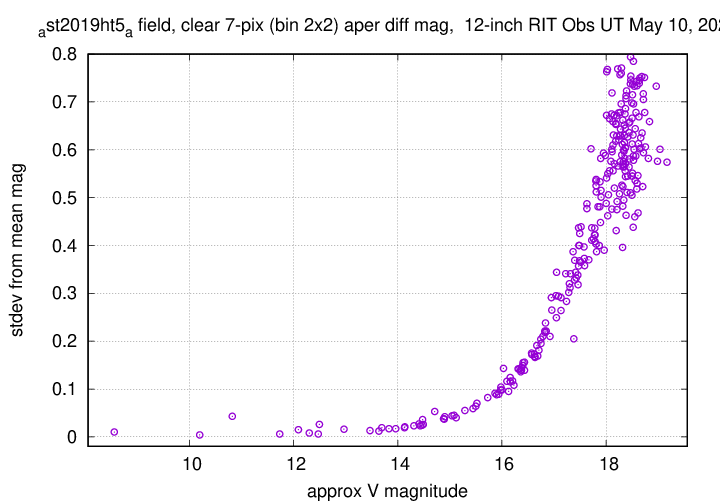
On the night of May 09/10, 2022, under good conditions, I used our ZWO ASI6200MM camera on the 12-inch telescope for additional tests. My goal this evening was to take a series of images over several hours to identify the current location of asteroid 2019 HT5, the orbit of which has become slightly uncertain.
Unfortunately, due to the proximity of the Moon, I was unable to find the object. However, I was able to determine that the detection limit for 30-second unfiltered images at a distance 12 degrees from the first-quarter Moon is roughly V = 17.
The Lowell Observatory's Minor Planet Services provide a number of excellent resources for asteroid hunters. One is a list of objects for which new observations are needed. I used this service to choose the object 2019 HT5, a main-best asteroid which is brighter than most in this critical state. The predicted apparent magnitude was V = 17.5, and it was situated well in our sky for observations early in the evening.
Unfortunately, the first-quarter Moon was just 12 degrees away. It turned out that the light of the Moon caused glare and a generally high sky background which made it impossible to see objects of such brightness clearly.
The main setup was:
Notes from the night:
I took a long series of 30-second images of the field centered near
RA = 11:00:10.87 Dec = +05:47:21
Below is a median of all 223 images taken during the run. It shows stars nearly down the limit of the POSS II plates.

The stars appeared to drift in an unusual direction, from west to east (to the left on the screen), during the early part of the run. Later on, the speed of the drift decreased. Could the new camera have changed the balance of the telescope? It's considerably lighter than the ATIK unit, especially without any filterwheel or off-axis guider.
The bright Moon was just 12 degrees or so from this field, a bit to the west. Every time I shifted the dome to follow the telescope, the Moon shone more clearly into the dome slit and into the telescope.

There wasn't a big drop in temperature, and so the FWHM didn't change much.

The ensemble zero-point shows a few signs of light cirrus, but, for the most part, the skies were clear.

Using aperture photometry with a radius of 7 pixels in the clear filter (binned 4x4, each pixel is 1.04 arcsec, so a radius of 7.28 arcsec), I measured the instrumental magnitudes of a number of reference stars and the target. Following the procedures outlined by Kent Honeycutt's article on inhomogeneous ensemble photometry, I used all stars available in each image to define a reference frame, and measured each star against this frame.
The photometric uncertainty rose from a floor of about 0.005 mag at the bright end to more than half a magnitude at the faint end.

Unfortunately, the target was just a bit too faint to be detected in the individual images. I was able to find the asteroid (1700) Zvezdara, which happened to be in the field as well, but only because I knew just where to look (you can see its very short, faint trail in the upper-right portion of the median image). It was roughly the same mag as 2019 HT5 (V = 17.5), and it, too, wasn't detected by XVista, even using a threshold of 3 sigma.
Live and learn. And don't look so close to the Moon.
Last modified 5/09/2022 by MWR.